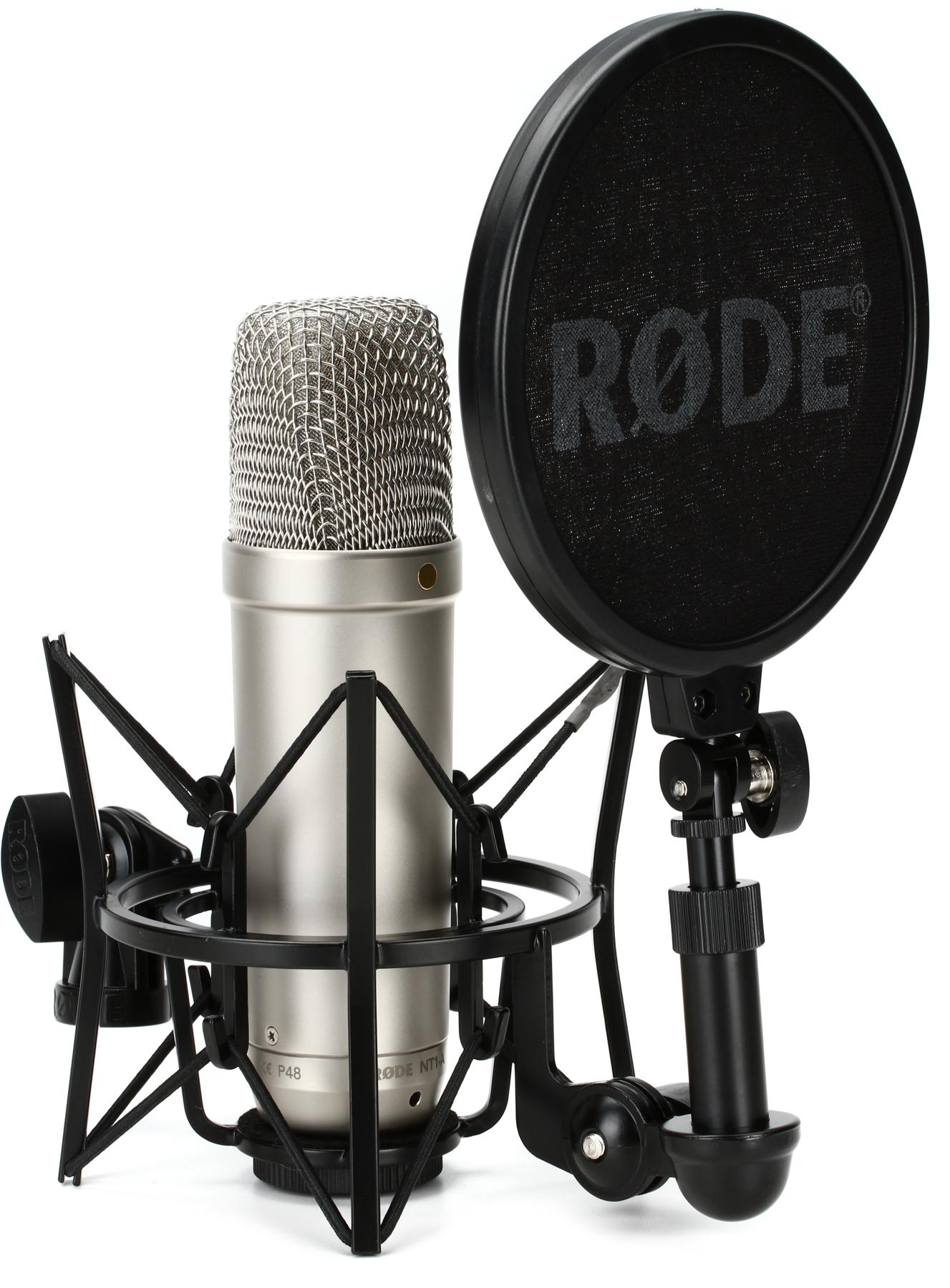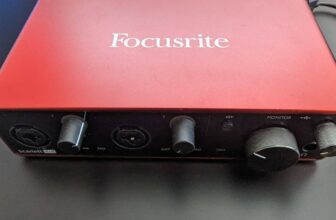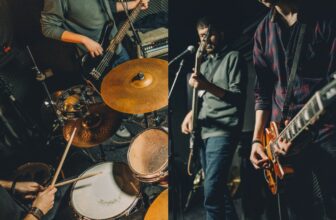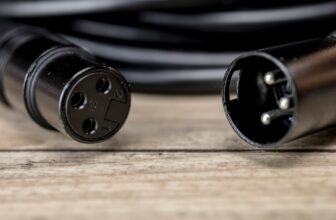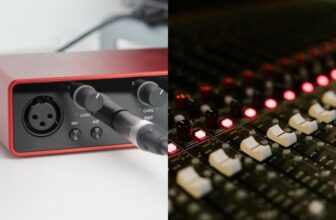Rode NT2-A Review – Is It Worth It?
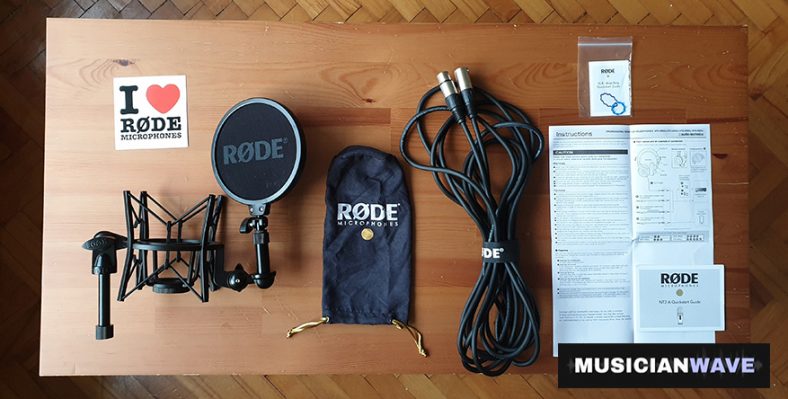
The Rode NT2-A is a large-diaphragm condenser microphone that I’ve been using in my studio for producing my songs and instrumental tracks. It’s a great microphone for recording both vocals and instruments because of its well-built versatility, with different using options.
Rode NT2-A is a large capsule, multi-pattern, versatile, condenser microphone. It promises you to block the environmental noise. It gives you multiple options for recording low notes and/or high notes by vocals and instruments. It is also adjustable for singing and/or playing softly or loudly. As NT2-A is a large-diaphragm microphone, you will need to buy a heavy-duty and durable mic stand in addition, in case that you do not have one yet.
Contents
Rode NT2-A
Considering NT2-A as a successful multi-pattern microphone, would not be a mistake. It is suitable and adaptable for different environments, no matter if you are recording in a full-equipped studio or in a home studio. As a multi-instrumentalist and singer, I will share my experiences and thoughts with you in this review. But before, let’s have a look at the main features of the NT2-A.
What’s it like to create a track with the NT2-A?
I can say honestly that the NT2-A offers you more than what a single microphone does. It is very well built and truly versatile. With all of the polar patterns, multiple high-pass filters, I am able to create a warm and yet rotund sound, no matter if I sing softly or loudly, also no matter if I sing near to the microphone or far from the microphone. As a multi-(loud) instrumentalist in the meantime, the variable pad selector gives me more freedom while recording piano or clarinet parts. I am not spending half an hour trying to find the perfect position for having the perfect sound anymore, which is something new for me.
With all that, I am not saying that it is the best choice for every occasion. But basically, with the excellent build quality, you will have most of the things you expect from a microphone during your recordings, and/or live performances, and/or sessions. The adjustability of the microphone also makes the mixing process easier for the studio recordings.
Additionally, it is a good option in its price range.
Overview
Firstly, when you open the box, besides the microphone itself, you will find an SM6 shock mount with detachable pop filter to built onto it. The shock mount is made to support many large diaphragm Rode microphones. It reduces the unwanted rumble and vibrations in the microphone, caused by the external factors. The SM6 also involves a removable pop shield with two axes of adjustment and a telescopic arm. In addition, the mounting bracket has an inseparable 5/8 and 3/8 inch threading.
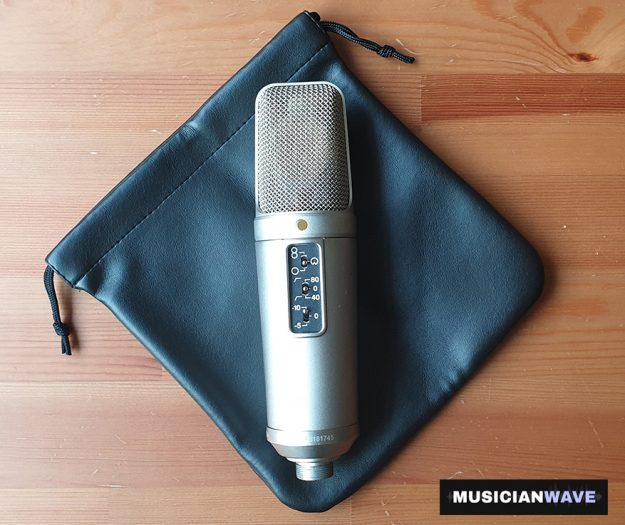
In the box, you will also have a dust cover, an XLR cable, a blue ring (if your mic cable is loose when connected, you can insert the blue ring into the microphone plug), a sticker, together with the instruction manual and a quickstart guide.
Secondly, I would like to talk about the build quality. The NT2-A has an Australian designed and manufactured type HF1 edge terminated, gold-sputtered, dual 5 um diaphragm capsule. The microphone is sturdy and thick. It has an all-metal body and a metal mesh grille and a satin nickel finish of the device is extremely chic and elegant.
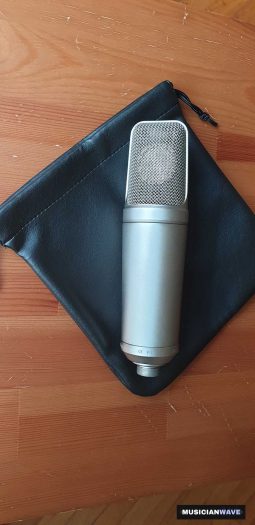
On the front side, there are three switches;
– a 3-position variable polar pattern selection switch for cardioid, figure eight or omnidirectional,
– a 3-position variable high-pass filter selection switch for off, 40 Hz or 80 Hz,
– and a 3-position variable pad selector for off, negative 5 DB or negative 10 DB.
There is nothing else on the backside of the microphone. You will find the XLR port on the bottom.
The main features of the NT2-A are;
- a frequency response of 20 Hz to 20 kHz,
- an output impedance of 200 0hms,
- a sensitivity of around -36 dB,
- a equivalent noise of only 7 dBA,
- a maximum SPL of 147 dB or 157 dB with the 10 dB pad engaged,
- and a phantom power requirement of Plus 48 Volts.
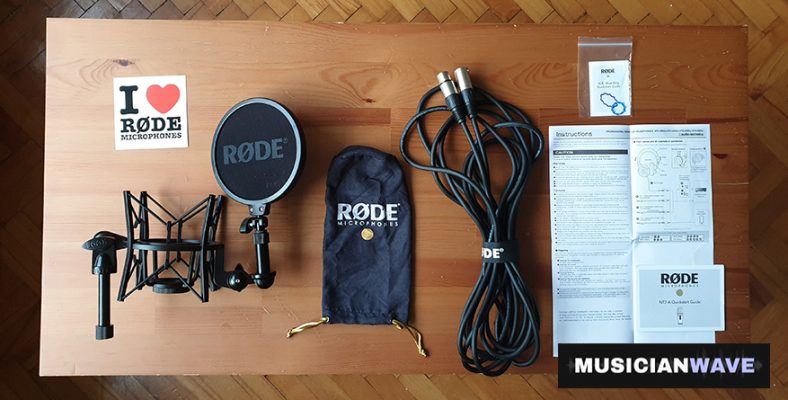
3-Position Variable Polar Pattern
As mentioned before, The NT2-A offers you a three way, directional pattern. You will have Omni, Cardioid and Figure 8; all controlled on the microphone. If you are wondering what Omni, Cardioid and Figure 8 patterns mean, here is a quick answer;
An omnidirectional polar microphone is capable of collecting sound from all angles in an environment, because of its sensitivity in a 360 degree radius. Omnidirectional polar microphones are mostly ideal for stage performances, studio recordings, chamber music rooms, talk shows. It is not ideal to pick up delicate sounds.
A cardioid polar microphone is capable of collecting even the slightest sounds from where the front side of the microphone points at. It has less sensitivity to the sides, and lowest sensitivity to its back. Cardioid pattern is widely used because of its rejection of rear sounds. Cardioid polar pattern’s curves of sensitivity look like the shape of a heart. Cardioid polar microphones are mostly ideal for PA (for Performing Arts), SR (for SOUND RECORDING) and studio recording.
A Figure 8 pattern microphone is capable of collecting sounds from two opposite directions, from the front and back of the microphone. For this reason, the pattern is also called “bi-directional”. The pattern has dead areas at 90 degrees on both sides of the microphone. Figure 8 pattern microphones are mostly ideal for recording two singing voices at the same time, recording a conversation with one microphone, and also for stereo recordings.
3-Position Variable High- Pass Filter
A high-pass filter is an electronic filter that removes frequencies below a certain set point while allowing only the frequencies above a certain cutoff point. As well as the low-cut filters and bass-cut filters’ use, the basic purpose of a high-pass filter’s use is also to remove unwanted low-end rumble, and to minimize plosives and/or proximity effects, etc.
As this feature may be needed in several situations, it is not always the case. You may also need a good low-frequency response while recording instruments with low range. This is why the NT2-A offers you 3 different options. In this way, you can keep the high-pass filter off, or you can adjust it for frequencies higher than 40 Hz, or you can adjust it for frequencies higher than 80 Hz.
3-Position Variable Pad Selector
This is a very useful feature, especially if you need to make recordings with loud instruments such as French horn, trombone, clarinet, oboe, flute, cello, and piano. When you activate the pad selectors, they will smooth the sound and reduce the sonic boom. The negative 10 DB selection softens the sound even more than the negative 5 DB selection. It is totally up to your need to select.
Drawbacks of the NT2-A
If you want to capture the tone of the environment where you make the recording, you may need a wider variety of polar patterns, such as super-cardioid pattern, wide cardioid pattern, etc.
If you want a clear microphone sound, this may not be the best option for you.
Also, the weight of the microphone (800 gr) may be a con for some users.
Alternatives
Warm Audio WA87 R2 may be a good alternative to the NT2-A, as a high quality, large-diaphragm, condenser microphone with 3 switchable polar patterns; omnidirectional, cardioid, and figure 8. Yet, it is a little more expensive than the NT2-A, without having variable high-pass filter and pad selections.
Another alternative may be the Aston Microphones Spirit Large-diaphragm condenser microphone, especially for those who want an open, clear microphone sound. Just as the NT2-A, the Spirit also has omnidirectional, cardioid, and figure-8 switchable multi patterns, plus a 10/20dB pad and 80Hz high-pass filter. The settings of the microphone are made to be useful mostly on vocals and acoustic guitars. It is not as versatile as the NT2-A and still, it is slightly more expensive.
NT1-A may be a more affordable alternative if you want principally a Rode microphone. Basically, the NT2-A is a more versatile and advanced version of the NT1-A. They both have similar details in the upper frequencies. The sound of the NT2-A is a little smoother compared to the NT1-A.
Check out our video review of the Rode NT1-A to see it in action.
Summary
The NT2-A is a well-built, truly versatile, adaptable to large range of frequencies and decibels, high quality and yet relatively affordable microphone. My overall thoughts on the NT2-A are genuinely positive. It is recommended.





